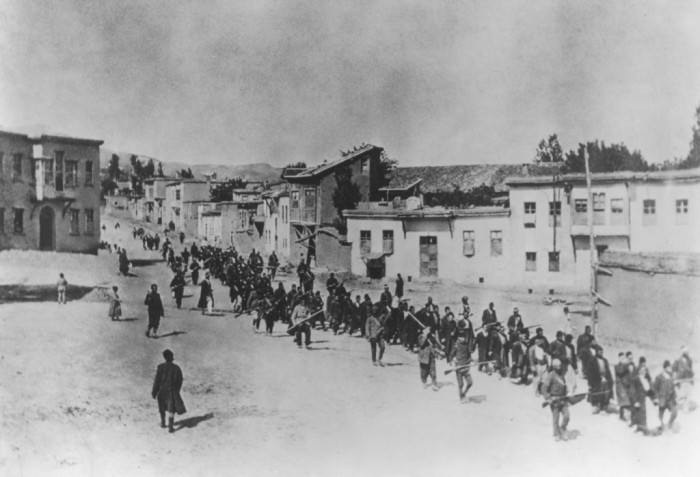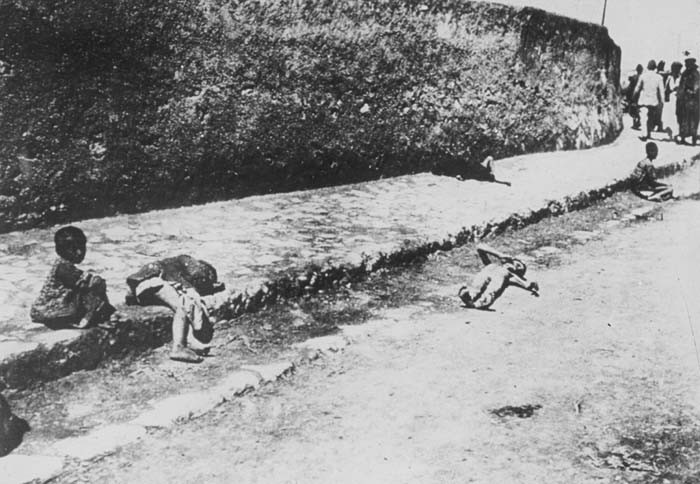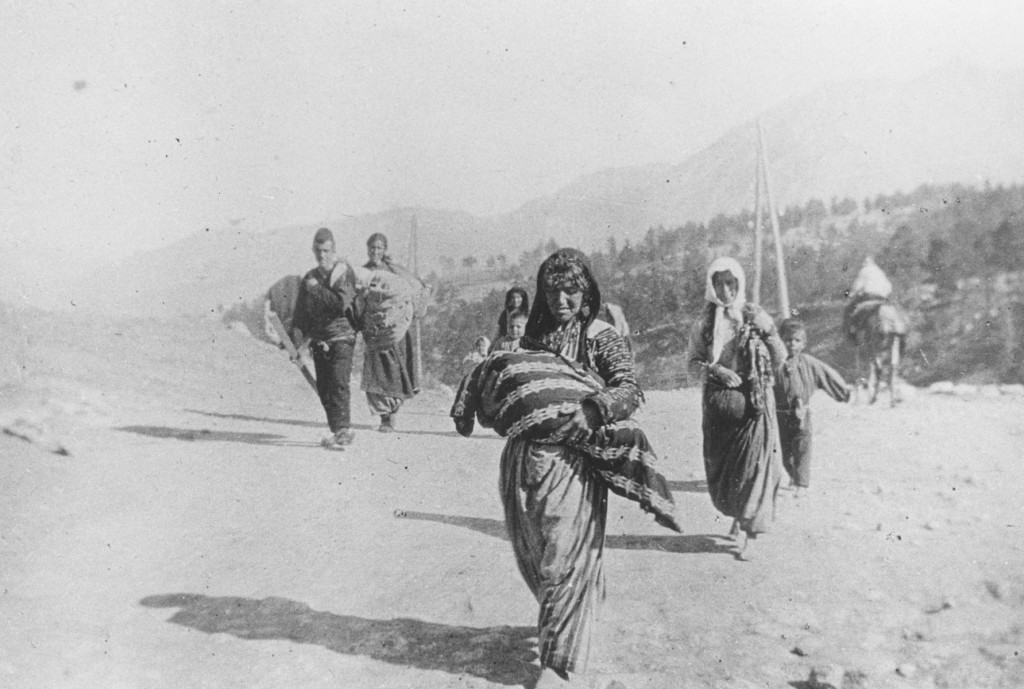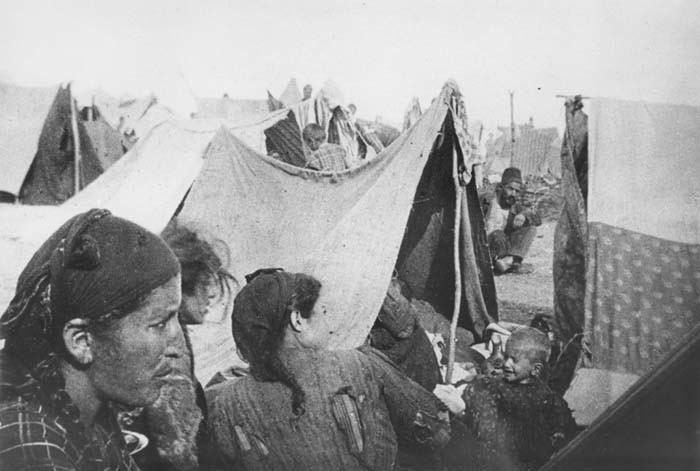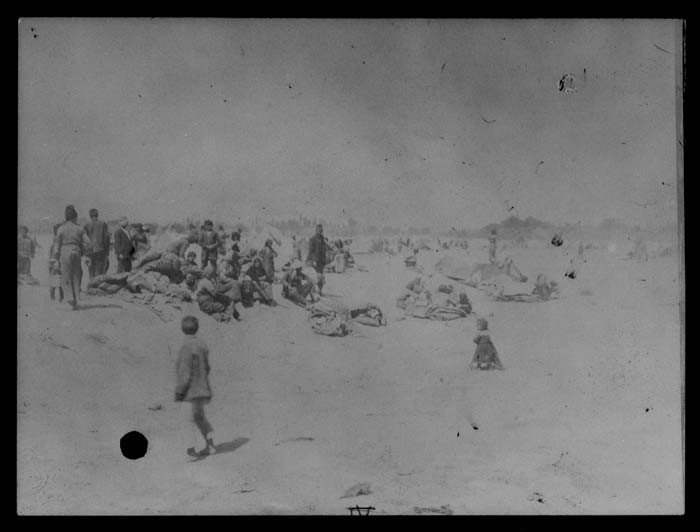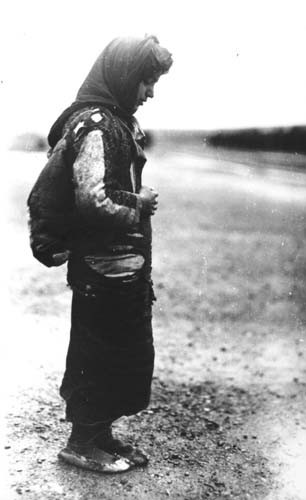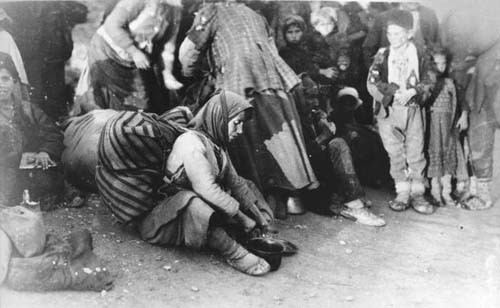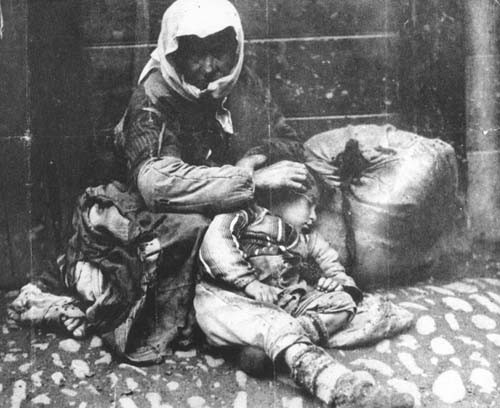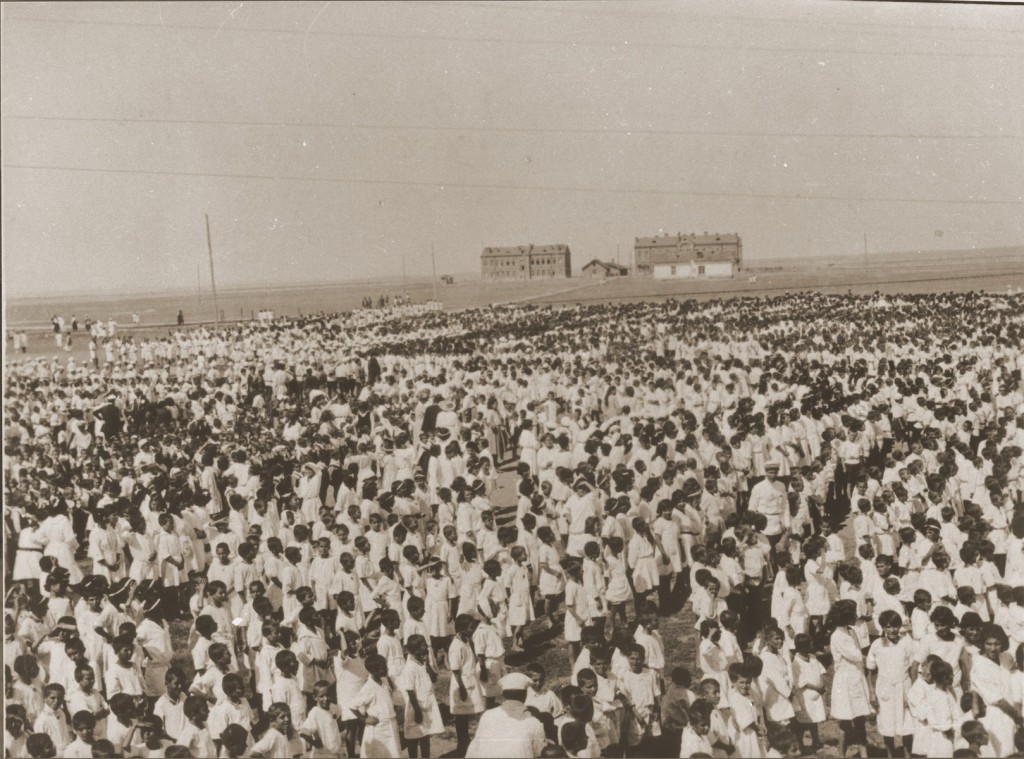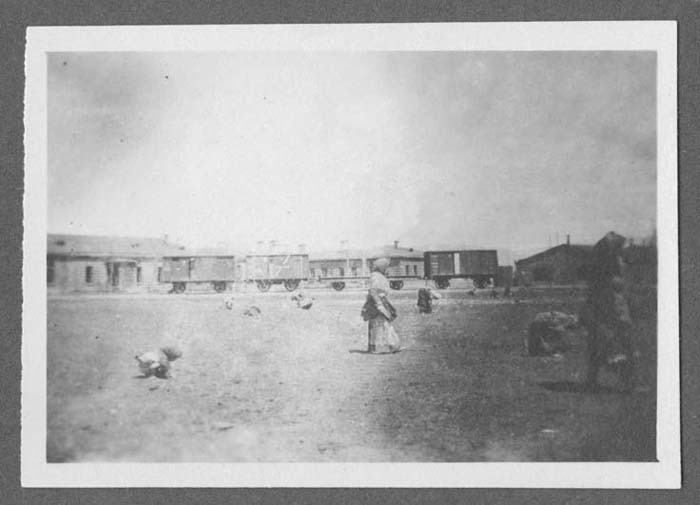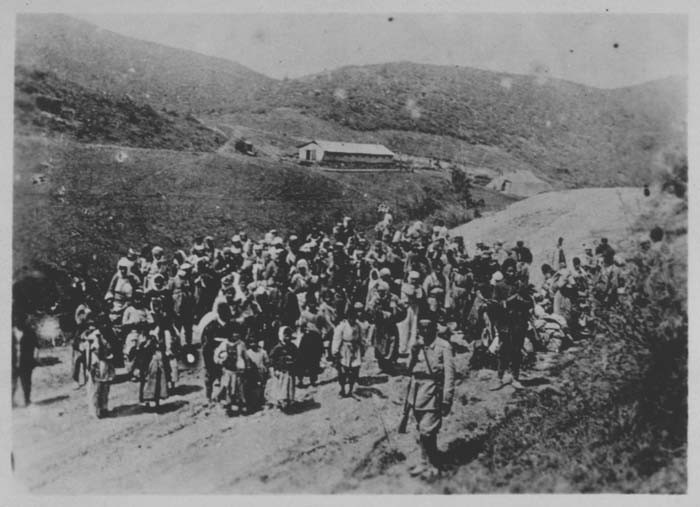
The Armenian Genocide (1915-16): In Depth
The Armenian genocide refers to the physical annihilation of ethnic Armenian Christian people living in the Ottoman Empire from spring 1915 through autumn 1916. There were approximately 1.5 million Armenians living in the Empire. At least 664,000 and possibly as many as 1.2 million died during the genocide. Armenians call these events Medz Yeghern (the great crime) or Aghet (catastrophe).
The origin of the term genocide and its codification in international law have their roots in the mass murder of Armenians. Lawyer Raphael Lemkin, the coiner of the word and its later champion at the United Nations, repeatedly stated that early exposure to newspaper stories about Ottoman crimes against Armenians was key to his beliefs about the need for legal protection of groups. (In 1948, in part due to the tireless efforts of Lemkin, the UN approved the Convention on the Prevention and Punishment of the Crime of Genocide.)
Ottoman authorities, supported by auxiliary troops and civilians, committed most of the murders of 1915-16. The government, controlled by the Committee of Union and Progress (CUP; also called the Young Turks), aimed to solidify Turkish Muslim dominance in the region of eastern Anatolia by eliminating the sizeable Armenian population there.
From 1915-16, the Ottomans killed large numbers of people in mass shootings; many others died during mass deportations due to starvation, dehydration, exposure, and disease. In addition, tens of thousands of Armenian children were forcibly removed from their families and converted to Islam.
Historical Background
Armenian Christians were one of many distinct ethnic groups in the Ottoman Empire. In the late 1880s, some Armenians formed political organizations seeking greater autonomy, reinforcing Ottoman doubts about the loyalty of the wider Armenian community within its borders.
On October 17, 1895, Armenian revolutionaries seized the National Bank in Constantinople, threatening to blow it up along with more than 100 hostages unless the authorities granted Armenian regional autonomy. Though French intervention allowed for a peaceful end to the incident, the Ottomans conducted a series of massacres.
In all, at least 80,000 Armenians were killed between 1894 and 1896.
The Young Turk Revolution
In July 1908, a faction that called itself the Young Turks seized power in Constantinople (the Ottoman capitol). The Young Turks was a group primarily composed of Balkan-born military officers and bureaucrats, which in 1906 had taken over a secret society known as the Committee of Union and Progress (CUP), and reformed it into a political movement.
The Young Turks aimed to establish a liberal, secular constitutional regime that put all peoples on equal footing. They argued that non-Muslims would accept Turkish nationalism if modernization and prosperity were the result.
Initially, it seemed that the new government would accommodate some Armenian social grievances. But in spring 1909, Armenian demonstrations for autonomy boiled over into violence. Ottoman soldiers, irregular troops, and civilians murdered as many as 20,000 Armenians in and around the city of Adana; up to 2,000 Muslims were killed by Armenians during the fighting.
Between 1909 and 1913, CUP activists veered increasingly towards a strident, nationalist vision for the Empire. They envisioned a future state that was not multi-ethnic and “Ottoman,” but culturally and homogeneously Turkish. Dense areas of Armenian settlement across eastern Anatolia presented a demographic obstacle to these ambitions. Following several years of political upheaval, CUP leaders seized dictatorial power in a coup on January 23, 1913.
World War I
Mass atrocities and genocide are often perpetrated within the context of war. The destruction of the Armenians was closely linked to the events of World War I in the Near East and the Russian Caucasus. The Ottoman Empire formally entered the war in November 1914 on the side of the Central Powers (Germany and Austria-Hungary), who fought against the Entente Powers (Great Britain, France, Russia, and Serbia).
In anticipation of threatened Allied landings at the strategically important Gallipoli peninsula, Ottoman authorities arrested 240 Armenian leaders in Constantinople on April 24, 1915, and deported them east. This roundup is commemorated today by Armenians as the beginning of the genocide. The Ottomans claimed that Armenian revolutionaries had established contact with the enemy and were preparing to facilitate a Franco-British landing. When challenged by the Entente Powers and the then-neutral United States, they explained the deportations as a precautionary measure.
Beginning in May 1915 the government expanded the deportations—regardless of distance from combat zones—marching civilians to holding camps in desert regions to the south [today: northern and eastern Syria, northern Saudi Arabia, and Iraq]. Many of these convoys originated in six heavily Armenian provinces in eastern Anatolia—Trabzon, Erzurum, Bitlis, Van, Diyarbakir, Mamuretü'l Aziz, and the district of Maras—and, eventually, from virtually all areas of the Empire.
Due to the Ottoman wartime alliance with Germany, many German military officers, diplomats, and relief workers witnessed firsthand the atrocities committed against Armenians. Their reactions ranged from horror and formal protests to, in some instances, tacit support of the Ottomans. This generation of Germans would carry the memory of these violent events with them into the 1930s and 40s, coloring their view of actions against Jews under the Nazis.
Massacres and Deportations
Taking orders from the central government in Constantinople, regional officials implemented mass shootings and deportations, assisted by local civilians. Ottoman military and security organs and their collaborators murdered the majority of Armenian men of fighting age, as well as thousands of women and children.
During forced marches through the desert, convoys of surviving elderly men, women, and children were exposed to arbitrary attacks from local officials, nomadic bands, criminal gangs, and civilians. This violence included robbery (e.g., stripping victims naked to take their clothing and conducting body cavity searches for valuables), rape, abduction of young women and girls, extortion, torture, and murder.
Hundreds of thousands of Armenians died before reaching the designated holding camps. Many were killed or abducted, others committed suicide, and vast numbers died of starvation, dehydration, exposure, or disease en route. While some civilians sought to assist the Armenian deportees, many more killed or tormented the people in the convoys.
Centralized Orders
Although the term genocide was not coined until 1944, most scholars agree that the mass murder of Armenians fits this definition. The CUP government systematically used an emergency military situation to effect a long-term population policy aimed at strengthening Muslim Turkish elements in Anatolia at the expense of the Christian population (primarily Armenians, but also Christian Assyrians). Ottoman, Armenian, US, British, French, German, and Austrian documents from the time reveal that the CUP leadership intentionally targeted the Armenian population of Anatolia.
The CUP issued instructions from Constantinople and ensured enforcement through agents in its Special Organization and local administrations. The central government also required close monitoring and data collection on the number of Armenians deported, the amount and type of housing they left behind, and the number of deportees reaching holding camps.
Initiative and coordination came from the highest levels of the CUP ruling circle. At the center of the operation were: Talât Pasa (minister of interior), Ismail Enver Pasa (minister of war), Baheddin Sakir (field director for the Special Organization), and Mehmed Nâzim (leader of demographic planning).
Government regulations restricted the Armenian population to no more than 10 percent in designated areas (in some areas no more than two percent), required settlements be limited to 50 families, and specified they be located far from both the Baghdad rail line and from each other. To meet these demands, local officials continued to move deportees, without adequate clothing, food, or water, back and forth across the desert under lethal sun during the day and in freezing cold at night. The deportees were regularly exposed to attacks from nomads as well as from their own guards. Consequently, human and natural forces devastated the Armenian deportees until they reached the mandated lower population levels.
Motivations
The Ottoman regime sought to consolidate its wartime position and to finance the “Turkification” of Anatolia by confiscating the assets of murdered or deported Armenians. This redistribution of property also provided incentive for large numbers of ordinary people to join in the assault on their neighbors. Many in the Empire believed that Armenians were wealthy; in fact, a large proportion of Armenians were poor.
In some cases, Ottoman authorities accepted conversion to Islam in exchange for the right to live or to remain in places of residence. Though responsible for the deaths of many thousands of Armenian children, the Ottomans often sought to convert and assimilate children to Muslim and specifically Turkish society. Ottoman authorities generally refrained from mass deportations in the cities of Istanbul and Izmir, both to hide their crimes from foreigners and to capitalize on the economic value of urban Armenians to the modernization of the Empire.


